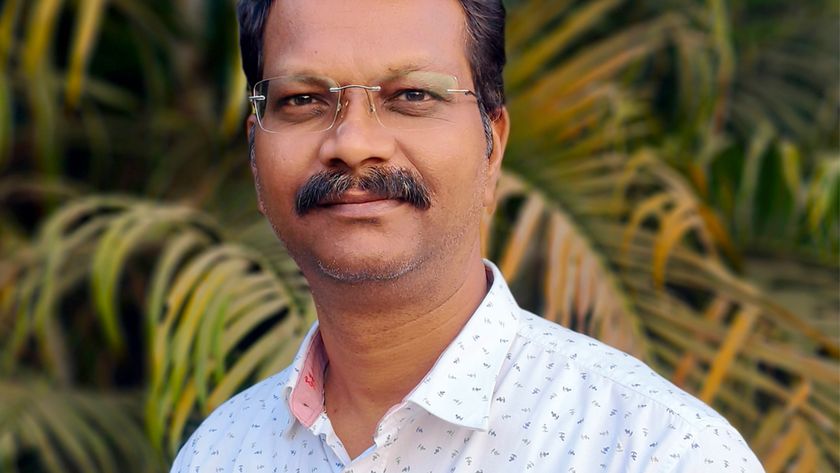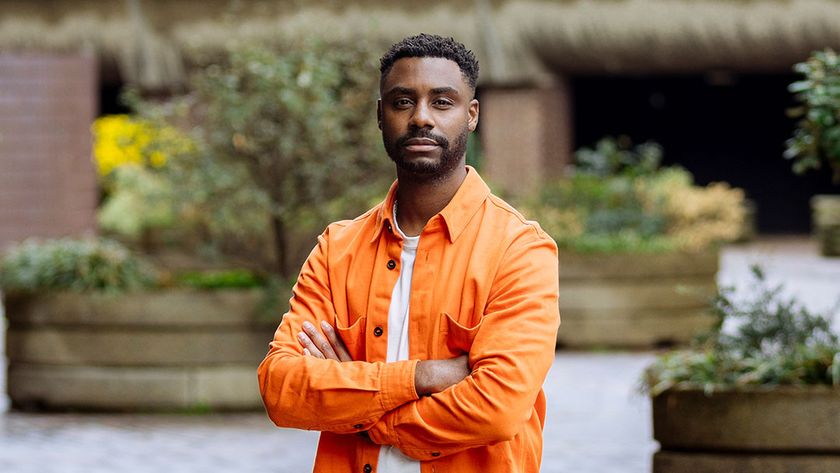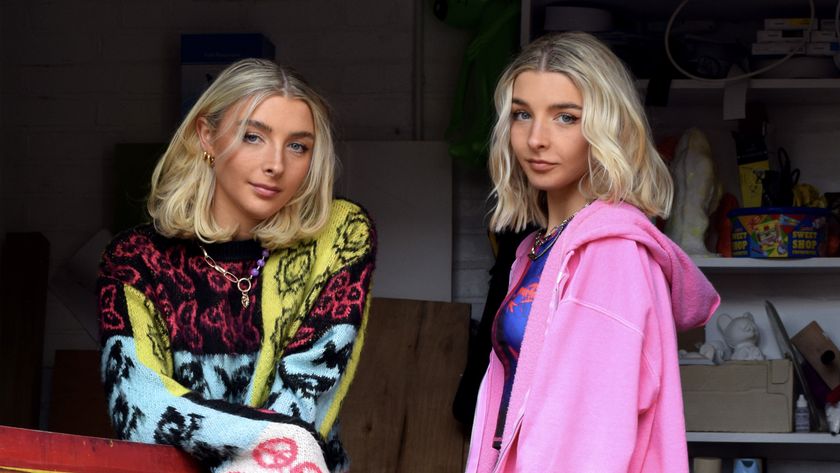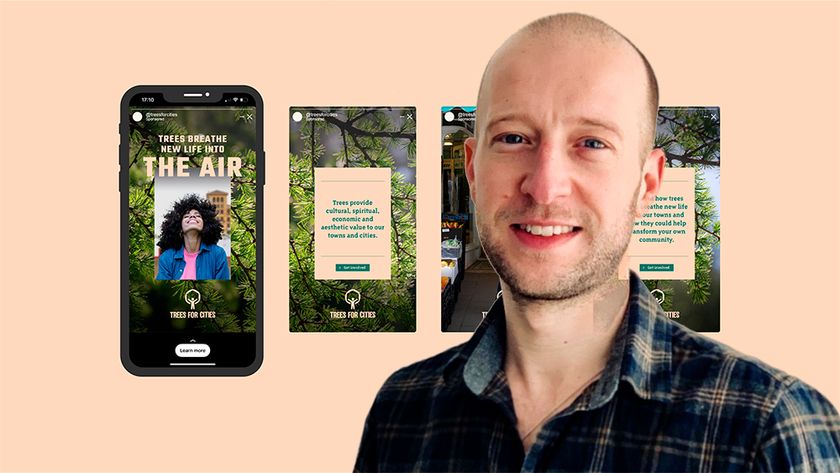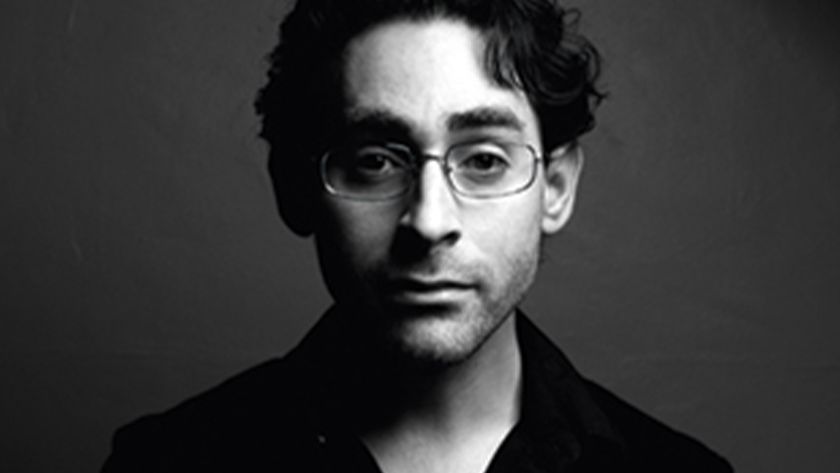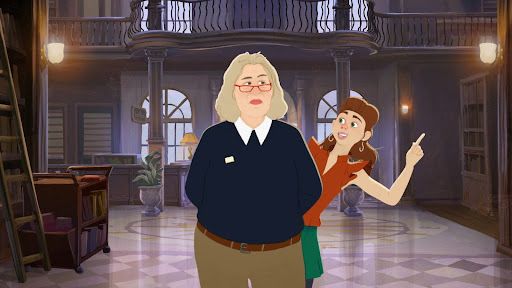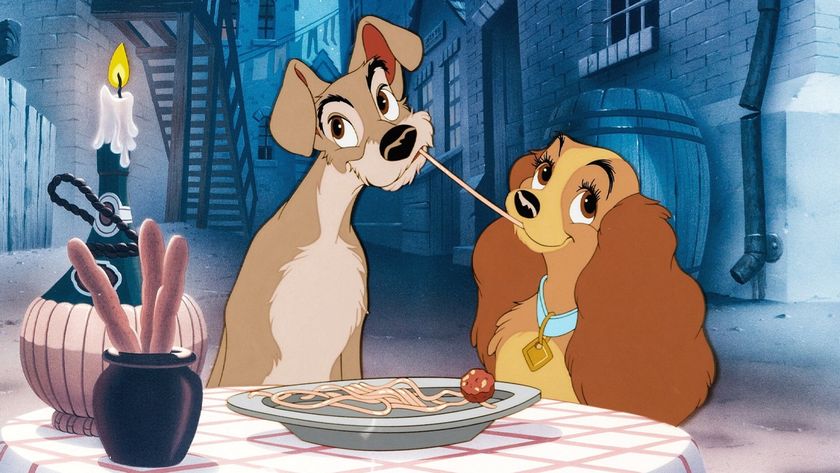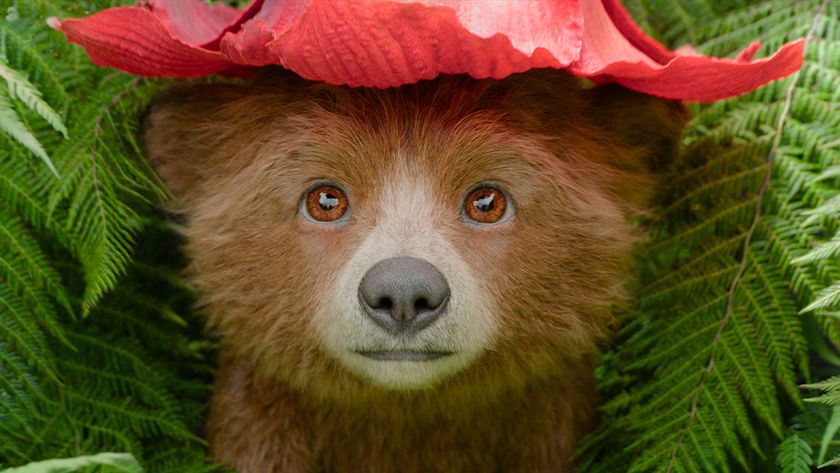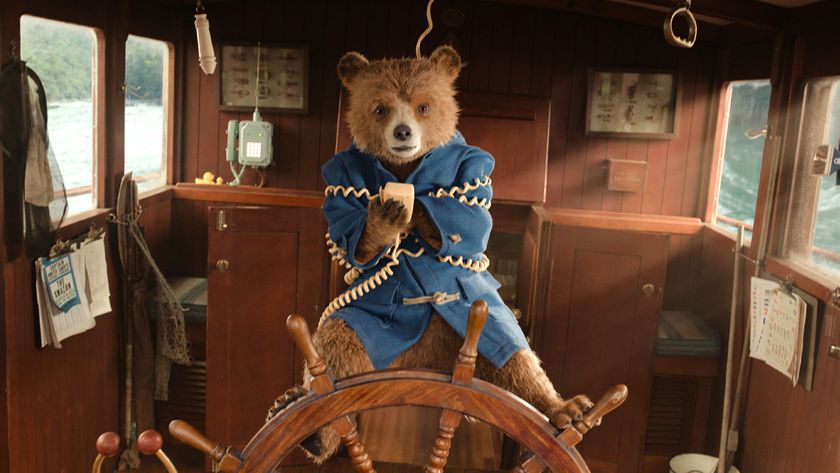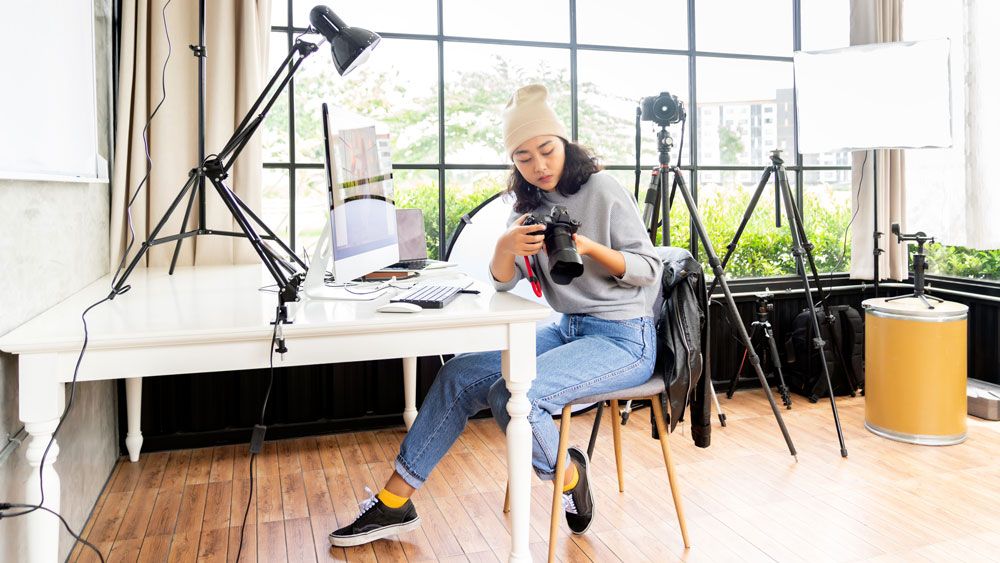
After a damp squib of a Christmas, we bet you're aching to flex your creative muscles. You've likely spent the festive season abusing your Netflix subscription, vegging out on the sofa and now it's time for action.
Starting a new creative hobby (mostly home-based for now, of course) could be just what you need to energise yourself, recharge your batteries and reignite your imagination – getting you ready for whatever 2021 has to bring. For this post, we talked to eight creatives about the positive affect their hobbies have had on their lives, and set out their tips and advice to help you to follow suit. Note that this is all pre-lockdown advice, but much of it is still relevant for 2021.
Is your resolution to read more? Don't miss our roundup of graphic design books.
01. Lego

For those who spend a lot of time staring a screen, a tactile hobby can help them switch off. "Lego building provides a feeling of zen for me," says web designer Richard Carter . "I find it relaxing to build... it’s stimulating to use my hands to create something physical, rather than on a screen.
Building Lego isn't just a physical activity, however. "It can also provide a mental challenge – working out how to replicate a texture or shape or how to manipulate Lego bricks to achieve the model you want to create," says Carter.
Carter's hobby has also spilled over into his working life. "I have a bowl of Lego parts in my office too: if I'm stuck on an issue, I find a quick rustle of bricks usually provides the break I need to solve it and aids my focus. Clients have also started playing during meetings, so it's catching on!"
I attribute a lot of my wellbeing to having a hobby I can become so involved in
Richard Carter
Playing with Lego can also be a more sociable hobby than you might imagine. "I'm a member of my local Lego User Group, where Adult Fans of LEGO (AFOLs) meet monthly to share their latest models and there are exhibitions around the country where AFOLs come together to provide a display of their latest models for the public," explains Carter. These meetings are currently online, due to the global situation.
Get the Creative Bloq Newsletter
Daily design news, reviews, how-tos and more, as picked by the editors.
"Having the Lego hobby as a creative release has been great for me," he summarises. "I attribute a lot of my wellbeing to having a hobby I can become so involved in, as well as providing a never-ending circle of new friends around the country!"
And one of the best things about Lego is it's relatively easy to get started, just get some hands on some bricks and start creating. See our best Lego sets for adults, best Lego Harry Potter sets and best Lego space sets to get started.
02. Knitting and crochet
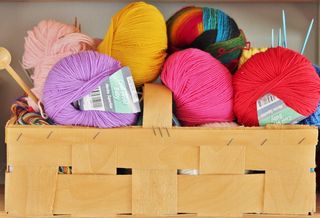
Think knitting is something only old people do? Then you're very wrong. People of all ages, across the world, love this creative pastime, and Alicia Ramirez, a Mexican web designer living in Canada, is one of them.
For her, though, it wasn't love at first sight. "Although my mom tried to teach me to knit as a child, I found it boring at the time," she admits. "It wasn't until 2006 or 2007 that I gave it another try. This time around, I was hooked."
What's great is that you can – pretty much – do it wherever you are. "I knit or crochet whenever I feel like it: mostly while watching TV or listening to podcasts," says Ramiraz. "I also attend a regular 'knit night' once a week, where I meet up with a group of yarn crafters."
I'm a web designer: mostly I just push pixels around. So having a tangible product that I can wear or use in the real world is very satisfying
Alicia Ramirez
So where does the appeal lie? "Although yarn crafts use many of the same skills I use in design – colour theory, basics of form, and so – I find that I really need to step away from the computer and use my hands to craft something," she says. "I'm a web designer: mostly I just push pixels around. So having a tangible product that I can wear or use in the real world is very satisfying. I also enjoy the social aspect of it. I usually work by myself, so the knit night is an opportunity to socialise."
Her hobby can even bleed into her day-to-day work, she adds. "Sometimes I see some yarns that inspire some of my colour palettes. The texture, symmetry and asymmetry of some garments help you see shapes and patterns you can then use in your designs."
Her advice to anyone who wants to follow in her footsteps? "Start with something easy and small, like a dishcloth," she recommends. "Most people try to make scarfs, which are a recipe for frustration. Also, visit your local yarn store. They often have classes, plus you get to meet new people."
03. Play an instrument

If you work in a creative field that’s focused on visuals, what better way to throw off the cobwebs than to indulge in a creative hobby that's aural? And that's exactly what Jason Pickthall has done.
Pickthall, a freelance concept artist based in Milton Keynes, has been playing guitar since he was at uni. "Drawing and art was once a hobby," he explains. "But once I started doing them full-time, I felt the need for something else to occupy me. It so happened my flatmate was great at the guitar, so he was a good 'in'."
When we spoke to him, he was focusing on improving his ability with the instrument. "I have a proper lesson every fortnight with a tutor; this gives me a view of objective progress and keeps me motivated," he explains. "And when I'm freelancing, I play for 20 minutes here and there when I want a screen break."
Playing guitar doesn't take away his focus on art, but complements it. "I think I need another outlet as I don't think I’m very good at sitting still," he admits. "Plus I think it makes me a more rounded individual. If all I did was concept art, I'd be pretty dull. I think outside interests help you find common ground within a team outside your discipline."
And let's face it, guitars are inherently cool. "It’s easy to pick up a few chords and jangle something out, and there is a plethora of YouTube tutorials," says Pickthard. "If you're starting out, though, I'd recommend you get some proper tutoring, even just 45 minutes a fortnight. It will set you on the right track and you'll not develop bad habits. It's liberating being a novice at something again: enjoy the struggle and the pain of building up callouses on your fingertips!"
04. Learn to cook
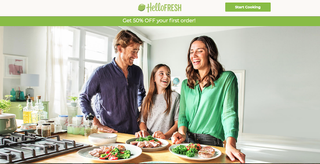
Most of us think we can cook, but how many of us take the time out to improve our skills and learn new recipes and techniques? Christian Harries, creative director at Arch Design in London, has been doing just that.
"I've subscribed to Hello Fresh to get their recipe cards and explore a few recipes that I wouldn't usually consider," he explains. "I've also got a few cookbooks, and try to do at least two new recipes from them every week. I usually pick a random page number and just go with whatever's on the page, unless I've done it before. The main way I'm learning, though, is by getting things wrong. Nothing teaches you the right amount of time to cook rice, for example, than having to scrape it off the bottom of the pan one too many times!”
For him, it's all about the process, rather than the result. "Honestly, sometimes I don't even eat what I cook; I save it for lunch and just have a something easy for dinner," he says. "As long as it's edible and I learn a new thing, it really doesn't matter too much."
Sometimes after a long day of design, it's just nice to do something that’s so far removed from my day-to-day work
Christian Harries
And has it made an impact on his day to day work? "I guess it has subconsciously taught me to be more patient with things," he replies. "And also that there's a number of ways to do things and none of them are 100 per cent right or wrong. It can be refreshing to feel that the results don't have to 100 per cent perfect, as long as it fulfils the job the client asked for.
"I think there's something very therapeutic about it," he adds. “Sometimes after a long day of design, I just want to escape and while cooking is sort of the 'design of food', it's just nice to do something that’s so far removed from my day-to-day work."
And here’s his advice to others wanting to improve their culinary prowess. “I'd say don't worry about the results, they will get better over time. Also, don't let recipes put you off. It can be very daunting to see thousands of different recipes for what is essentially the same dish, but all that matters is that you find one that you're comfortable with making. Yes, it can be nice to make it more extravagant, but just learn the basics first and you can worry about details later.”
05. Photography

Not every hobby remains just a hobby; for some it can become a useful second source of income. Any they include Shona Cutt, a freelance graphic designer based in Bath, for whom music photography has moved from hobby to a parallel career.
“I first started getting into music photography in 2006 after I was taking a small point and shoot camera to the gigs I was going to,” she recalls. “I was also obsessively reading music magazines, and seeing other photographers’ work published gave me the hunger to do the same.”
She finally took the plunge, buying her first DSLR in 2011, and ended up going on a mini-tour with a friend's band across the central belt of Scotland. “I loved it,” she recalls. “I hadn’t had any photography training, but it's something I've just always had a passion for.”
I love the challenge of capturing the energy of a live performance and working with constantly changing light
Shona Cutt
With live gigs, she says, practise makes perfect (not easy at the moment, but hopefully again soon). “You start to develop an anticipation for what the performers are going to do next, and learning how to deal with almost non-existent lighting is essential. And it’s great fun. I love the challenge of capturing the energy of a live performance and working with constantly changing light, to create memories for the audience and the musicians themselves.”
Her experiences with music photography has shaped her day-to-day design work too. “The editing skills I've developed help to get the most from an image, and being a photographer myself has given me more confidence in being able to art direct other photographers – especially on the occasions when it was over the phone,” she explains. “And overall it's helped shape my eye for spotting a striking image.”
For anyone wishing to get into music photography, she offers the following advice (to follow when it's possible). “Start with photographing bands in pubs, open mics and so on. Some smaller venues will let you take a camera in; I would always ask first. Just get out and shoot as much as possible, not just gigs: everything. Also, save your money on the higher-end cameras to start with and get as fast a lens as you can afford: I found out the hard way!“
“There are more blogs and websites around now than when I first started,” she adds. “Matthias Hombauer runs a great workshop programme and community with How To Become A Rockstar Photographer and Todd Owyoung's website helped me enormously when looking to buy my first DSLR.”
06. Paint miniature figures
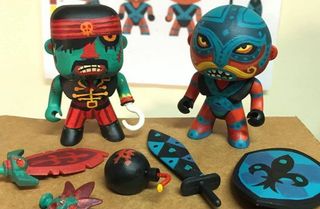
Painting miniature figures might sound like a creative hobby that’s strictly limited to children. But grown-ups can get a lot out of it too, says Stewart Ainslie, one half of Don’t Walk in Stirling.
He’s been painting miniatures since he was a child, but it was renowned illustrator Steve Simpson who encouraged him to continue his passion as an adult and share his love for his “geeky hobby” with others.
For Ainslie, this hobby offers one clear benefit to the modern-day creative: total escapism. “Sculpting and painting such small figures can take hours, so it requires your full concentration, and that’s really important to me,” he says. “It takes me away from screens, notifications and the pub. I will often switch my phone off, or leave it in another room entirely; crazy, right? Also, you can’t really paint well if you’ve had one coffee too many, and obviously alcohol doesn’t help much either.”
Sculpting and painting such small figures requires your full concentration. It takes me away from screens, notifications and the pub
Stewart Ainslie
“There’s a current trend for meditation and mindfulness right now,” he continues. “And that’s all very well and good, but often it still involves a phone or some kind of app. Miniature making, and painting, is removed from all the noise that clouds so much of our professional and personal lives. Did I mention the lack of constraints or clients? If I think Orks look better with yellow skin, then so be it!“
“If you really want to do something unique: pick up some modelling clay and sculpting tools,” he concludes. “It’s pretty cheap and surprisingly clean to use. Nothing beats painting a miniature that you’ve sculpted from nothing!”
07. Gardening
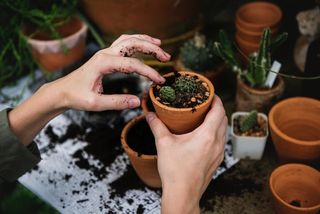
If you ever want to feel creative and alive, then what better pastime to pursue than gardening, where you’re actually creating and nurturing living things?
Craig Minchington, an award-winning graphic designer living and working in Bristol, has always been a fan. But since moving in with his girlfriend and having their own garden he’s become, in his own words, “slightly obsessed”.
“For me it's still a creative channel but away from computers, TV and phones,” he explains. "Somewhere I can switch off, zone out and give my eyes and brain a rest. Sometimes I go out thinking I'll just repot a few plants, then next thing I know, I'm out there for five hours.”
I'm making it up as I go along, and that's half the fun
Craig Minchington
And while some might see gardening as mere drudgery, Minchington sees it as “totally creative. I had a blank canvas of empty pots and flower beds, so I've planned out colour combos of flowers, placement of tall growing shrubs with small bushes, and so on.” It’s also a way to ensure a good work-life balance. “I have had to take time off from work in the past through complete burnout,” he explains, “so gardening was a conscious effort to amend past mistakes.”
For anyone thinking of taking up gardening, his main tip is: “Just go for it and don't be afraid to mess up. I literally have no clue what I'm doing. I went to a garden centre, bought some plants and pots, and started from there. I'm making it up as I go along, and that's half the fun. Just buy easy growing plants: they all have labels on them explaining the conditions they need so you can't go wrong. And even if nothing grows, then at least you got outside, away from screens and had a bit of a workout.”
08. CGI art
For many readers of Creative Bloq, CGI art will be their full-time profession. But for others, like Mark Dearman, creative director at Bristol agency True, it’s a hobby that takes them outside of their normal day job.
“I started to experiment with CGI around [nine] years ago,” he explains. “In part this was to allow me to create assets and motion for commercial projects. But I also wanted an outlet for ideas that weren’t necessarily linked to business objectives.“
What it offers him is the freedom to explore ideas and techniques without any commercial constraints, he continues. “When you’re working to a deadline, you don’t always have the luxury of time to experiment. Experimentation and reflection are key to personal growth. I try and do a bit every day, even if it’s only an hour. Usually over lunch or early evening. I render through the night.”
I believe creation is an act of discovery; if you want to come up with good and new ideas, you have to put in the time
Mark Dearman
And over the years, it’s become an invaluable part of his creative process. “I believe creation is an act of discovery; if you want to come up with good and new ideas, you have to put in the time,” he reasons. “Often, the idea I start with has become something completely different and unexpected by the end of the process. I use my Instagram feed as a digital sketchbook and reference it in my day-to-day work.”
For this reason, he’d always encourage his fellow designers to take up a creative hobby. “It doesn’t have to be CGI, it could be photography, illustration, video and so on – they can all be personally rewarding and the positive impact on your work can’t be overstated. It shifts your perspective and broadens your creative abilities.”
Of course, that doesn’t mean it’s all plain sailing: you have to think carefully about how to sustain your efforts. “When you start to learn something new you pick up a lot, fast. Once you’ve got all the beginner stuff out the way, you become painfully aware of how much more there is to learn and how long it will take to master. Progress becomes slower and it can become disheartening. That’s where you have to build it into your routine, otherwise it can fall by the wayside. Make it part of your day."
Related articles:
- Painting techniques: Creative tips for artists
- Drawing apps for iPad: Top options for creatives
- Sketching tips: Advice to empower you to make your mark

Thank you for reading 5 articles this month* Join now for unlimited access
Enjoy your first month for just £1 / $1 / €1
*Read 5 free articles per month without a subscription

Join now for unlimited access
Try first month for just £1 / $1 / €1
Tom May is an award-winning journalist and editor specialising in design, photography and technology. Author of the Amazon #1 bestseller Great TED Talks: Creativity, published by Pavilion Books, Tom was previously editor of Professional Photography magazine, associate editor at Creative Bloq, and deputy editor at net magazine. Today, he is a regular contributor to Creative Bloq and its sister sites Digital Camera World, T3.com and Tech Radar. He also writes for Creative Boom and works on content marketing projects.

